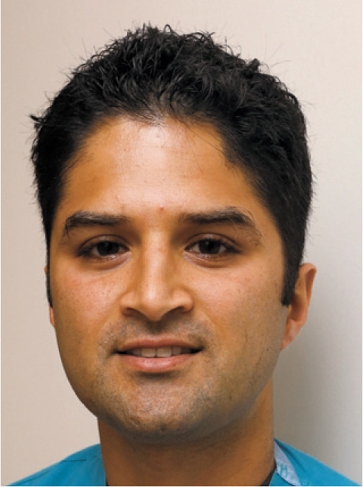The Latest In Wound Care
Dr. Michael Shin And Dr. Ajay Bhatt
Emergency department physicians at The Queen’s Medical Center
What do you do at Queen’s?
Bhatt (above right): I work at the Queen’s Wound Care Center and in the emergency department. I am a trained ER physician and began working at the Wound Care Center this past year.
Shin: The same – I also am an ER physician and have been working at the center for about a year.
Where did you receive your schooling and training?
Bhatt: I did my schooling at the Chicago Medical School and my residency at Emory in Atlanta.
Shin: I was born and raised in Oklahoma, where I went to medical school, and I did my training in New York City.
How does someone end up as a patient at the Wound Care Center?
Shin: People come to us if they’ve had a wound for at least four weeks.
What kind of wounds last that long and need ongoing care? Do you see many gunshot wounds?
Shin: It’s not too often that we see gunshot wounds. The most-dominant wounds we see are those from delayed surgical healing, pressure wounds, venous ulcers and diabetic foot ulcers. Most all wounds start off with some type of trauma.
Bhatt: The etiology may have started with a car accident or a gunshot wound. There are a couple of patients who have had gunshot wounds to the spine and it left them paralyzed. Based on the paralysis, they developed a wound because they can’t turn, and a pressure ulcer formed. The wounds we mainly see are on the lower extremities – 60 percent to 70 percent are on the legs.
Why is that?
Bhatt: Legs are more prone to being exposed to injury, from walking pressure and kicking things. When a wound heals, there are a lot of different systems involved. What happens, in the elderly especially, is that several systems that maintain their skin integrity are compromised. For example, their nutrition isn’t good and their veins are bad. Subsequently, if they get an injury, that’s when the wound problems begin.
What do you do to help the wound heal?
Shin: We go through all the systems involved in healing – nutrition, arteries, veins, diabetes management – and we try to optimize each system, per se, and give the wound the best chance to heal. One of the things we do that you probably can’t get from your primary care physician is called debridement. We remove all the dead tissue, because if the wound is stagnated you have a lot of gunk that builds up, so you want to remove that. Ideally, the wound is a perfect bowl shape and it heals from the bottom up. If it heals from the top over, then you still have a pocket that’s never really connected, and it’ll eventually become a big pus pocket. We shape the wound and clean it.
How big of a problem is infection?
Bhatt: It’s big. When patients come to the wound center, we try to find the etiology of the wound because there are tons of things it could possibly be. Whether it’s caused by pressure or has arterial or venous origins, there’s a different form of treatment for each type. Infection is one of the problems we deal with. If we have a patient with cellulitis in the leg, which is a general term for skin infection, the reason the cellulitis is occurring is one thing and we figure out how to get that cellulitis under control, followed by getting the tissue off to promote the wound to get better. A lot of it is making an ideal environment for the wound to heal.
Shin: Sometimes the infection goes down to the bone. We take the junk off because that’s just food for bacteria.
Everyone has a certain amount of contamination in terms of bacteria. If it’s out of control, we have to give antibiotics.
Do you teach people how to manage their wounds at home?
Bhatt: We really promote education and empowerment. Providing preventative medicine is where health care is going. It’s something that we’re going to see more of with all the changes in health care occurring right now. It’s a disservice to our patients if we don’t educate them and prevent these wounds from recurring. A lot of time is spent talking with the patient.
Shin: We also educate the primary care physicians and keep open communication with them. We send them our notes on the patient so they can see what we’re doing to care for the wound. This way, it’s a joint effort to educate about wounds the patient may have and how the patient can prevent them from getting worse in the future.
Anything else?
Bhatt: Wound care is a field fairly new to Hawaii. On the Mainland, you see a lot of patients with wounds who are sent to dedicated wound care centers. We now have a Wound Care Center at Queen’s, and it provides quality, effective treatment for the people of Hawaii. rfournier@midweek.com






